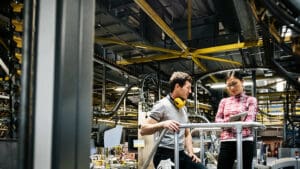Businesses are preparing to sharply increase their investment in artificial intelligence next year, even as concerns around data privacy, regulatory compliance and security risks continue to weigh heavily on IT leaders.
New research from enterprise content management platform Storyblok shows that nine in ten companies plan to raise their AI budgets in 2026, with more than half expecting a “significant” uplift. Only 2% anticipate cutting their AI spending.
The survey of 200 senior IT and procurement professionals, all responsible for AI deployment within large organisations, suggests that despite market jitters about an AI bubble, corporate appetite for automation and generative tools remains strong.
According to the report, 39% of respondents say AI is now “fully integrated” across their organisation, while a further 39% describe their readiness as “mature”. Just 7% consider themselves still at the “piloting’’ stage, signalling a rapid shift toward enterprise-wide AI implementation.
Leaders also expect clear financial and operational returns. Over half cited operational efficiency as the strongest benefit of AI adoption, followed by faster time-to-value, enhanced employee productivity, and improved decision-making.
Yet this enthusiasm is tempered by growing anxiety about governance and risk. The top obstacles to successful AI adoption were: Data privacy and regulatory concerns (61%), Security risks (58%) and Legacy technology restrictions (43%).
When asked what would most improve their confidence in adopting AI, respondents emphasised stronger data governance, better system integration, and greater transparency from technology vendors. Only 12% said pricing was a priority, a sign that cost is currently a secondary concern compared with compliance and security.
Generative AI will reshape content management — but most firms aren’t ready
An overwhelming 91% of respondents believe generative AI will transform content management within their organisations. However, despite this confidence, adoption of Generative Engine Optimisation (GEO), increasingly crucial as AI-driven search reshapes marketing, remains limited.
Only 23% have a fully integrated GEO strategy, while 41% are either in the early stages or have yet to begin adapting their content for AI search engines.
Dominik Angerer, Storyblok’s CEO and co-founder, said the findings reflect a period of optimism mixed with realism: “Budgets are growing robustly, AI adoption is maturing fast, and confidence in AI’s return on investment is rising. But concerns around security, governance and regulatory compliance are likely to intensify and could inhibit adoption in the short to medium term.”
He added that while almost all organisations recognise AI’s power to reinvent content management, few have yet retooled their systems or strategies accordingly.
“AI search is upending marketing, yet less than a quarter of businesses have adapted. There’s a pressing need for new AI platforms and tools to help organisations regain confidence in their content.”
With firms preparing to double down on automation while wrestling with governance and security fears, 2026 is shaping up to be a defining year for enterprise AI — one where investment momentum will collide with the realities of risk, regulation and readiness.










